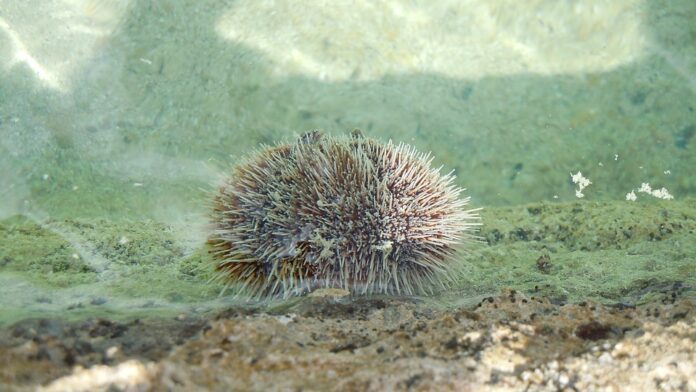Introduction
Sea urchins are a delicacy enjoyed by many around the world, prized for their rich, buttery flavor and unique texture. In recent years, the demand for sea urchins has been on the rise, leading to increased interest in both wild-harvested and farmed sea urchins as a sustainable source of income. In this report, we will compare the sustainability and profitability of wild-harvested sea urchins versus farmed sea urchins, examining key factors such as environmental impact, production costs, market trends, and financial performance.
Environmental Impact
Wild-Harvested Sea Urchins
Wild-harvested sea urchins are typically gathered by divers who collect them from their natural habitats in the ocean. While this method of harvesting has been practiced for centuries, it can have significant environmental impacts. Overfishing of wild sea urchin populations can disrupt the delicate balance of marine ecosystems, leading to declines in biodiversity and the overall health of the ocean. Additionally, the use of traditional harvesting methods such as bottom trawling can damage sensitive seafloor habitats, further exacerbating the environmental impact.
Farmed Sea Urchins
Farmed sea urchins, on the other hand, are raised in controlled environments such as aquaculture farms or sea ranches. This method of production can help alleviate the pressure on wild sea urchin populations and reduce the environmental impact of harvesting. By providing a stable and sustainable source of sea urchins, aquaculture farms can help protect natural ecosystems and promote biodiversity. However, farming operations can also have their own environmental challenges, such as pollution from waste products and the use of antibiotics and other chemicals.
Production Costs
Wild-Harvested Sea Urchins
The production costs associated with wild-harvested sea urchins can vary depending on factors such as fuel prices, labor costs, and equipment maintenance. Harvesting sea urchins from the wild can be labor-intensive and time-consuming, requiring skilled divers to locate and collect the animals. In addition, fluctuations in sea urchin populations and environmental conditions can impact the overall yield and profitability of wild harvesting operations.
Farmed Sea Urchins
Farmed sea urchins typically have more predictable production costs compared to wild-harvested sea urchins. By controlling the environment in which the sea urchins are raised, aquaculture farms can optimize feeding schedules, water quality, and other factors to maximize growth and minimize mortality rates. However, setting up and maintaining a sea urchin farm can require significant upfront investment in infrastructure, equipment, and operational costs.
Market Trends and Demand
The market for sea urchins has been steadily growing in recent years, driven by increasing demand from consumers in countries such as Japan, China, and the United States. Sea urchins are popular in high-end restaurants and sushi bars, where they are often served raw as sashimi or used as a garnish in various dishes. As consumers become more health-conscious and adventurous in their culinary choices, the demand for sea urchins is expected to continue to rise.
Wild-Harvested Sea Urchins
The availability of wild-harvested sea urchins can fluctuate depending on factors such as weather conditions, fishing regulations, and the health of natural populations. This variability can impact the supply chain and lead to price fluctuations in the market. While some consumers prefer wild-caught sea urchins for their perceived freshness and flavor, others may be concerned about the sustainability of wild harvesting practices.
Farmed Sea Urchins
Farmed sea urchins have the potential to provide a more consistent and reliable supply of product compared to wild-harvested sea urchins. By controlling the production process from start to finish, aquaculture farms can ensure a steady stream of high-quality sea urchins to meet market demand. However, the challenge lies in balancing production volumes with market fluctuations and consumer preferences to maximize profitability.
Financial Performance
Wild-Harvested Sea Urchins
The financial performance of wild-harvested sea urchins can be highly variable due to factors such as weather conditions, regulatory changes, and market demand. Harvesters may experience periods of high profitability when sea urchin prices are high and supplies are limited, but they can also face challenges during lean seasons or when competition from other suppliers increases. Overall, the financial viability of wild harvesting operations depends on the ability to adapt to changing market conditions and maintain sustainable harvesting practices.
Farmed Sea Urchins
Farmed sea urchins offer the potential for more stable and predictable financial returns compared to wild-harvested sea urchins. By investing in aquaculture technology and best practices, farmers can optimize production efficiency, reduce costs, and increase profitability. However, the initial investment required to set up a sea urchin farm can be significant, and farmers must carefully manage risks such as disease outbreaks, market fluctuations, and environmental challenges to ensure long-term success.
Conclusion
In conclusion, both wild-harvested and farmed sea urchins have their own advantages and challenges in terms of sustainability and profitability. While wild-harvested sea urchins offer a natural and traditional source of product, they can be subject to environmental risks and market uncertainties. On the other hand, farmed sea urchins provide a more controlled and sustainable alternative, but they require careful management and investment to ensure financial success. Ultimately, the choice between wild-harvested and farmed sea urchins depends on a variety of factors such as market demand, environmental impact, production costs, and financial goals. By weighing these considerations carefully, producers can make informed decisions that support both their bottom line and the long-term health of sea urchin populations and marine ecosystems.



